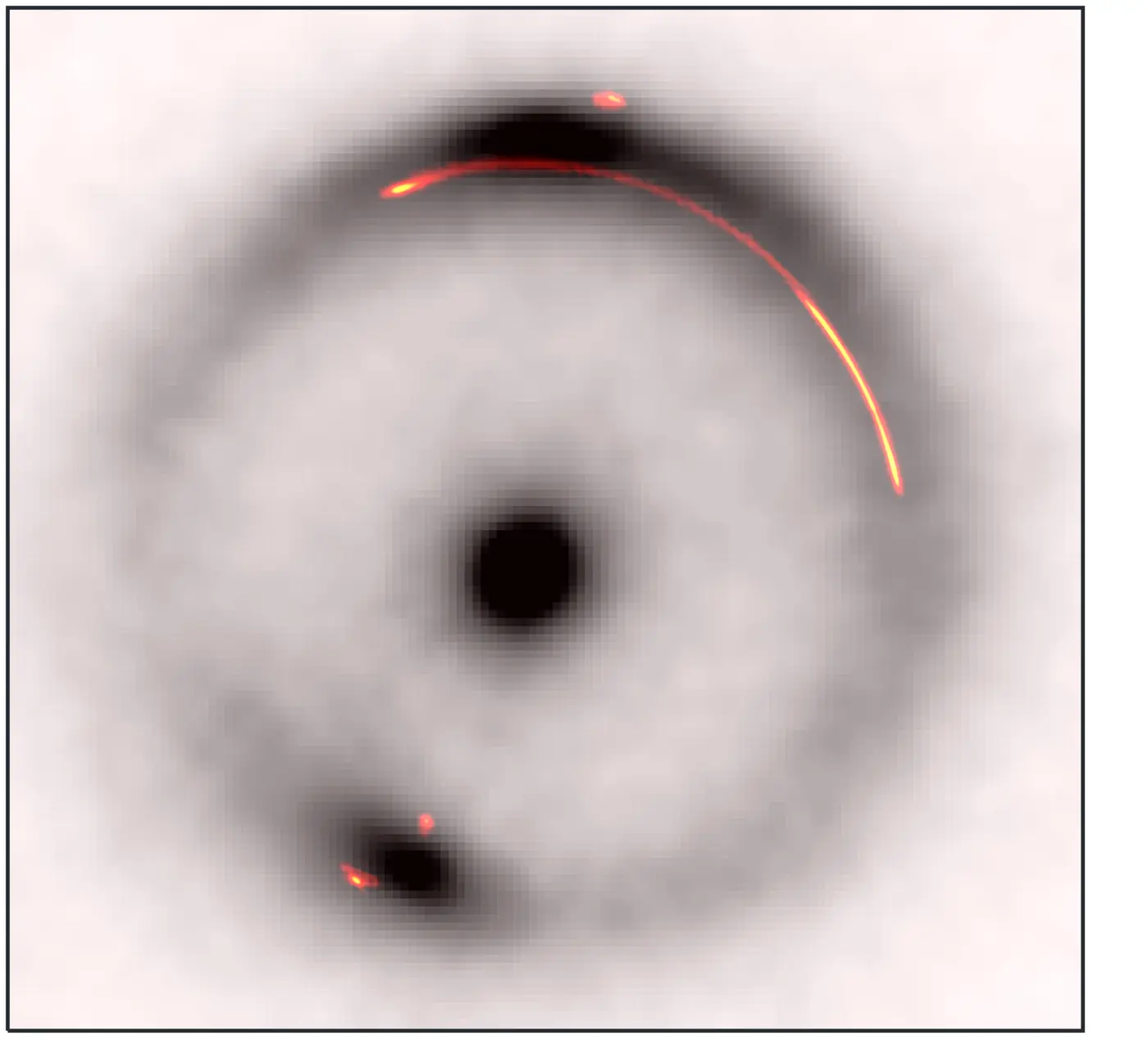Astronomers have successfully detected the smallest known clump of dark matter, providing new insights into this elusive substance that constitutes approximately 85% of the universe’s mass. The discovery, led by Dr Devon Powell from the Max Planck Institute for Astrophysics, reveals a dark matter object with a mass equivalent to one million times that of the Sun, located roughly 10 billion light years from Earth. This region of space dates back to when the universe was just 6.5 billion years old.
The research team utilized a network of radio observatories across continents to create an Earth-sized telescope. Notable among these is the Green Bank Telescope in West Virginia, USA, recognized as the world’s largest fully steerable radio telescope. Its extensive dish measures 100 meters by 110 meters, enabling precise observations.
The breakthrough relied on the phenomenon of gravitational lensing, a concept predicted by Albert Einstein‘s Theory of General Relativity. This theory describes how massive objects can bend spacetime, which in turn distorts the path of light from more distant galaxies. While observing a system known as B1938+666, the scientists noticed an anomaly within an Einstein ring, which was a visual representation of this gravitational effect.
A subtle “pinch” was detected in the gravitational arc, indicating the presence of an additional clump of invisible mass. According to Dr Powell, the team published their findings in Nature Astronomy and likened their method to identifying an invisible object by observing how it distorts the images of celestial bodies behind it.
To achieve this, the researchers analyzed vast amounts of data, developing new computational methods that required the power of supercomputers. The technique of gravitational imaging effectively allowed the team to “photograph” the invisible object through its gravitational influence. The dark matter clump is represented by a white blob at the pinch point of the arc, although no light from it has been detected across optical, infrared, or radio wavelengths.
This discovery has significant implications for current theories of galaxy formation. There has long been debate regarding the distribution of dark matter—whether it exists as a smooth spread or in distinct clumps. The finding of this small concentration supports the cold dark matter theory, which posits that dark matter consists of slow-moving particles that clump together through gravitational forces in the early universe. These particles were “cold,” enabling them to merge into larger structures over time, eventually forming galaxies and galaxy clusters.
Looking ahead, the team anticipates that every galaxy, including our own Milky Way, contains similar dark matter clumps. The next challenge is to discover additional clumps and determine whether their numbers align with theoretical predictions. If further discoveries are made across various regions of the universe, some existing theories about the fundamental nature of dark matter may require re-evaluation. Until then, the quest to unravel the mysteries of dark matter continues.
